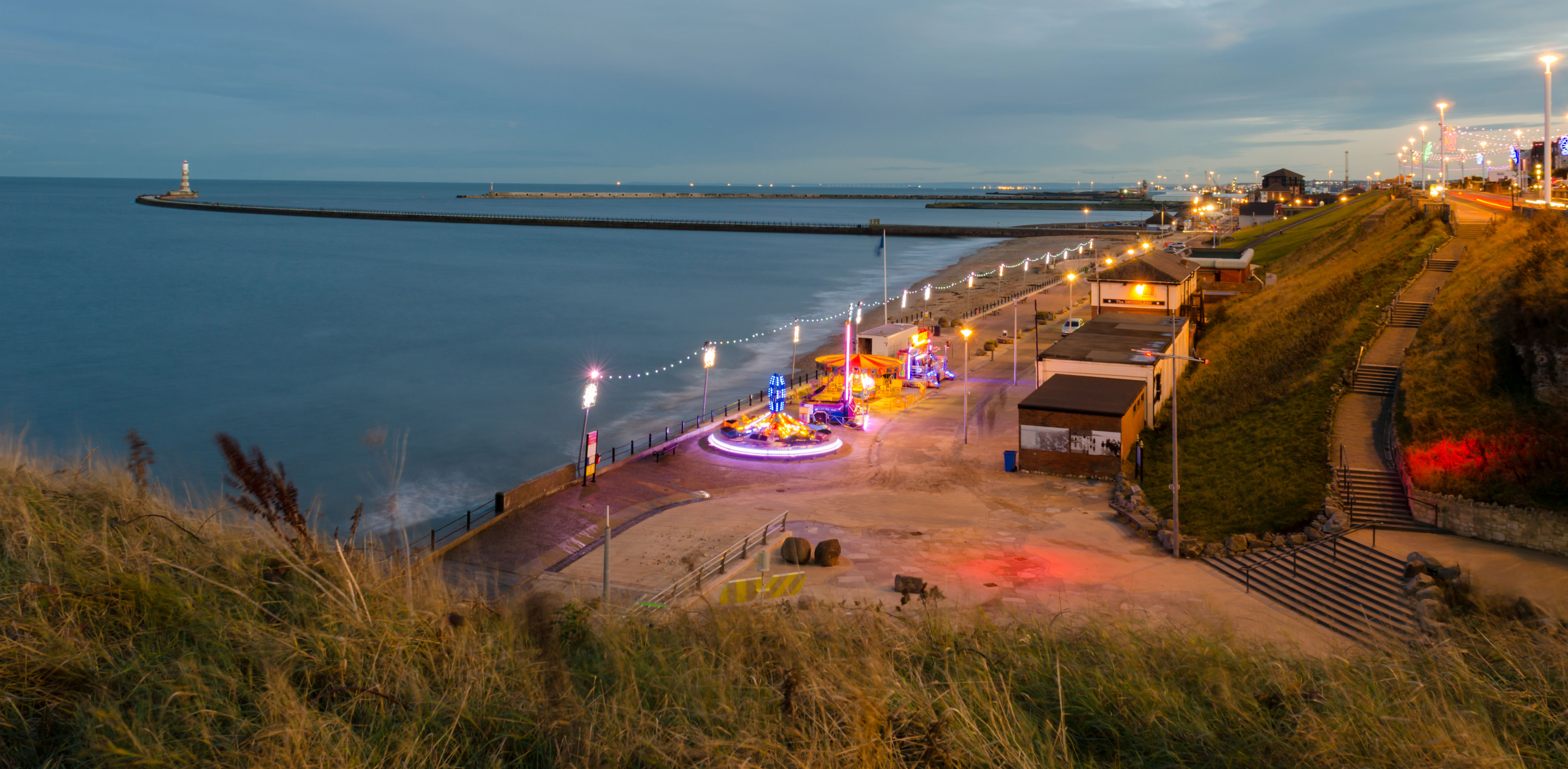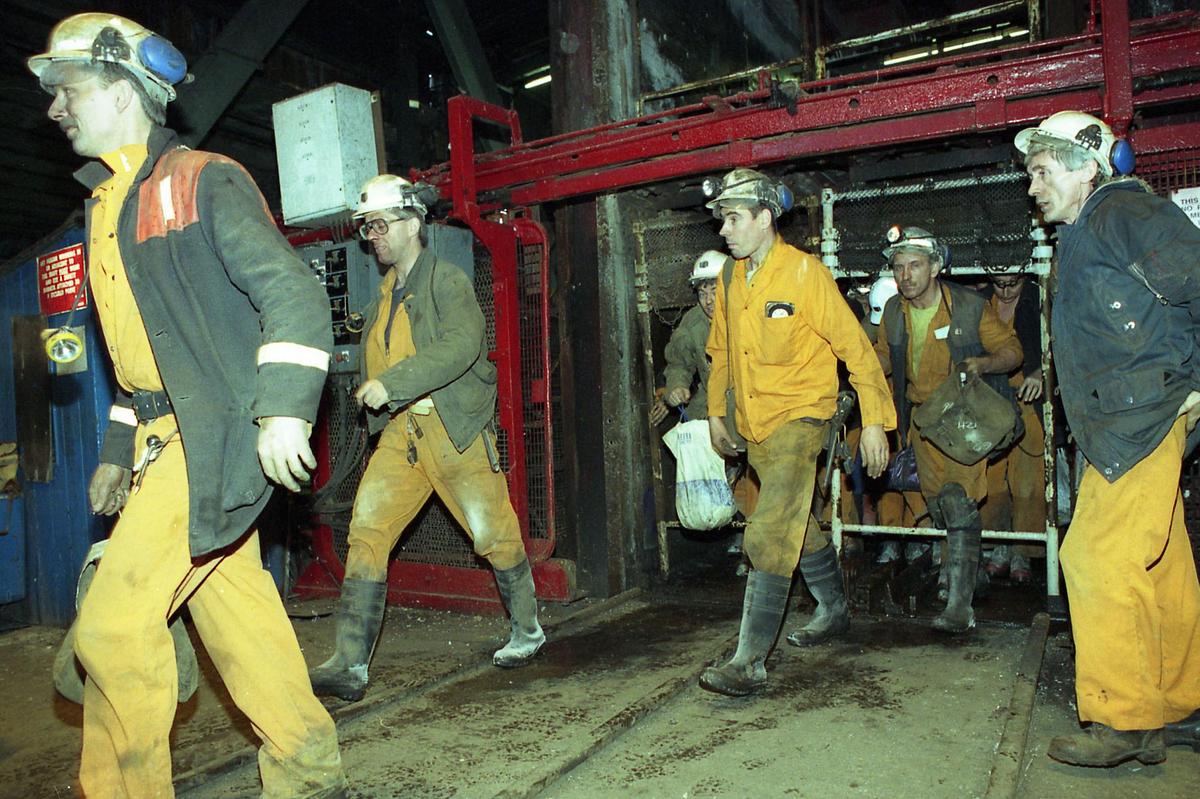Here, in no particular order, are 13 things you might never have known about Sunderland.
1. You can see stalactites in Sunderland
Behind the Marina Activities Centre in Roker is the North Dock Tufa, a set of calcite stalactites created over the centuries by dripping water.
No one knows for sure where the water comes from and it was only discovered in 1992 when some old huts were removed, although some claim to have known about it before that.
Tufa looks especially beautiful when lit up at night. It’s free to view and is open day and night.
2. Wearmouth Colliery was the deepest mine in the world
There can’t be a person living in Sunderland who doesn’t know about the city’s mining history, but not everyone would know that the area was once home to the deepest mine in the world.
When Wearmouth Colliery began producing coal in 1835, it was the deepest mine in the world at 481m, almost a third of a mile.
Eventually there were three pits on the site, imaginatively entitled A, B and C. In December 1993 Wearmouth became the last deep coal mine of the County Durham coalfield to close.
The Stadium of Light was built on the site next to the three shafts leading deep below the earth.
References to how far down you can go have not been lost on those who attend the stadium.
3. The first stained glass windows were made at St Peter’s ... probably
The earliest known reference to true stained glass windows is from 675 AD, when Benedit Biscop imported French craftsmen to do the glazing of the monastery of St Peter’s in Monkwearmouth.
In the 1970s hundreds of pieces of coloured glass and lead, dating back to the 7th century, were discovered there and at St Paul’s in Jarrow. St Peter’s was built a decade before St Paul’s, so it is thought that Sunderland was presumably first.
The city’s glass making heritage is now celebrated at the National Glass Centre, just a stone’s throw from St Peter’s Church in Monkwearmouth.
4. Sunderland was one of Britain’s most heavily bombed places in World War Two
The Germans were well aware of the astonishing shipbuilding capacity on the River Wear and the town was made a target because of that.
Sunderland’s shipyards produced a quarter of Britain’s tonnage of ships during the war, as shipyard girls stepped in to keep production going as the male workforce fought in the war.
A total of 267 people were killed in Sunderland by the Luftwaffe, and 90% of the town’s houses were damaged by bombs, 1,000 of which were totally destroyed.
In Easington 36 died in air raids. In Seaham it was 51 - 36 of them in a single raid in 1943.
5. Sunderland had a ‘mobile’ lighthouse
The Roker lighthouse is a well known symbol of the city, but before the current lighthouse was built in 1903, a lot of effort had gone into preserving the previous building.
In 1841 the working, 300-tonne, 24m high stone Roker lighthouse was moved on wheels 145m – uphill - then put back again after a new north pier was built.
It sounds like a Monty Python job, but it really happened and is the oldest documented example of such a feat. The know-how was provided by Scottish civil engineer John Murray.
Sadly no photographs exist of the older lighthouse and pier, which were replaced by the current models in 1903.
6. There is no such thing as Tunstall Hill
We rarely hear anyone refer to Tunstall Hills, plural, which is the correct name.
Most Wearsiders are aware that there are two peaks there. However, a common misconception is that they are Tunstall Hill and Rocky Hill, when in fact they are Green Hill and Rocky Hill, collectively Tunstall Hills. They are sometimes referred to as the Maiden Paps.
Whatever the name, they peak over 100m above sea level and are the remains of a great barrier reef that once separated a lagoon from a tropical sea and took around 300 million years to form.
7. The Beatles played in Sunderland three times
Everyone knows that The Beatles played at the Empire at the height of Beatlemania in November 1963, and many people know the legend about the group sliding down the pole in the fire station next door to escape hysterical fans.
But most people don’t know that the biggest act in the history of popular music gave three performances on Wearside, firstly as bottom of the bill to Helen Shapiro on February 9, 1963 at the Empire Theatre before they played the Rink Ballroom in Park Lane three months later just before the superstardom began.
8. There’s no such thing as Penshaw Monument
The structure is actually the Earl of Durham’s Monument, named after John George Lambton, the 1st Earl of Durham in whose honour it was built.
He was a fairly unremarkable bloke, yet despite this, he managed to rise high in politics, a career which was probably helped by his immense wealth, privilege and an Eton education.
He died in 1840 and building of the monument started in 1844 and as time has gone on the Earl of Durham’s Monument, aka Penshaw Monument, is far more famous than the bloke it honours.
9. The FA Cup was invented by a Mackem
Charles W Alcock was born in Norfolk Street in 1842, the second of nine children. The family made their money in shipping, which meant that Charles could be sent to mega-posh public school Harrow.
As a player he played centre-forward for Wanderers and captained England, but he is best remembered for founding the world’s first national football tournament, the FA Cup, which was first played in 1871.
The Alcocks were quite the footballing family and Charles’ older brother, John F Alcock, was a founder of the Football Association in 1863.
10. The hand grenade was patented by a Mackem
Keeping on the theme of Mackem inventions, a Sunderland man invented the hand grenade.
The “Mills bomb” was invented by William Mills, born in 1856 in Wear Street in Southwick, where the Times Inn pub stands.
There were hand grenades before Mills, but the most recognisable was his “pineapple” design, first used in 1915 at the height of World War One and which changed trench warfare.
It was safer than its predecessors (at least for the user) and around 75 million would be manufactured.
Less controversially, Mills also patented aluminium golf clubs. He died in Somerset in 1932.
11. The first UK cases of cholera were in Sunderland
The deadly disease first spread to Europe in 1827, and despite best efforts to keep the illness away from British shores, cases were quickly recorded in Sunderland.
The symptoms were horrific and included profuse diarrhoea, vomiting and sweating and death would often occur within hours of the first symptoms.
The disease’s mortality rate was high as doctors were baffled by how to stop the spread of the illness.
Suspected cases of cholera began to be reported in Sunderland from late summer 1831 and despite quarantine attempts soon spread across the region and then the rest of the country. Across Britain, 32,000 people died of cholera in 1831 and 1832.
12. Houghton Feast is one of the UK’s oldest annual events
Immediate apologies to Houghtonians who know all this, but the Houghton Feast has been an annual event since the 12th century.
Originally the festival of the dedication of the Parish Church of St Michael and All Angels, the event quickly became an annual affair, although initially geese were cooked and eaten, rather than an ox.
It is widely, but wrongly believed to have been started by the Reverend Bernard Gilpin in the 1550s, although he is believed to have started the tradition of roasting an ox or pig for the feast.
Somewhat ironically, Rev Gilpin died after he was knocked down by an ox in Durham Market Place in 1583.
13. Alien 3 was filmed in Seaham
Okay, so we’ve now strayed a little way outside Sunderland, but worth a mention is Blast Beach.
The Dawdon beach plays a starring role as alien planet, Fiorina 161 in the 1992 Alien 3 film starring Sigourney Weaver.
At the time the beach was polluted by years of coal mining and the sand covered in black soot leading the director David Fincher to decide it looked sufficiently like somewhere not quite of planet Earth.
The dark and desolate area was also used as the backdrop of the final scenes in Get Carter with Michael Caine.
It’s much nicer these days after a major clean up operation which cost £10million.
So how many of them did you know? What do you think we’ve missed that we should tell people about? Please let us know, because we’d like to find out too.

.png)

.png)
.png)
.png)
.png)
.png)
.png)
.png)